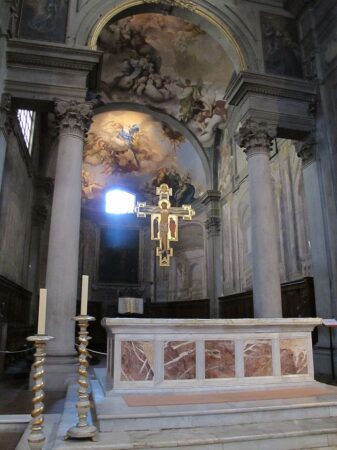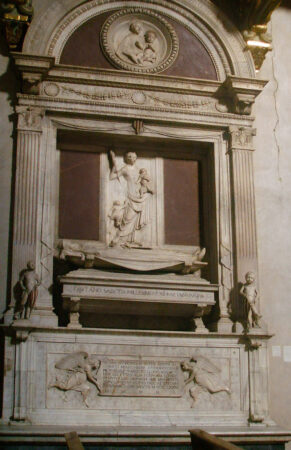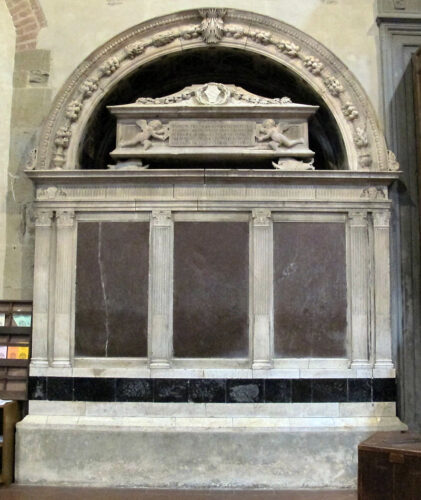Badia Fiorentina
Just across the street from the Bargello Museum sits another treasure trove of Florentine heritage, the Badia Fiorentina. The Badia or abbey, dedicated to the Virgin, was founded in 978 by Willa, Marchioness of Tuscany, and assigned to the Cassinese Benedictines. When Willa’s son Ugo became Margrave of Tuscany he considerably augmented his mother’s benefactions. In the Badia Fiorentina, where he is buried, his memory was kept alive over the centuries through ceremonies and learned writings, such as Dante’s Paradiso. A Mass is still said for the repose of his soul every 21 December.
The original abbey stood at the edge of the first city walls and faced a different direction from the present building, with its facade to the west and three apses to the east. Thanks to substantial donations and privileges accorded by popes and emperors, the abbey acquired or inherited a number of the surrounding properties. Here the monks engaged in bookish activities (paper-making, illuminating, binding), which together with the preparation of parchment inside the abbey helped to stamp the entire area as a center of book production.
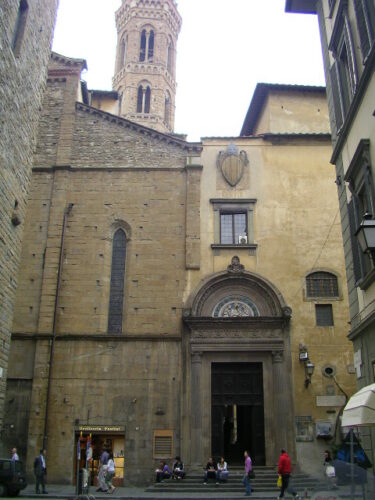
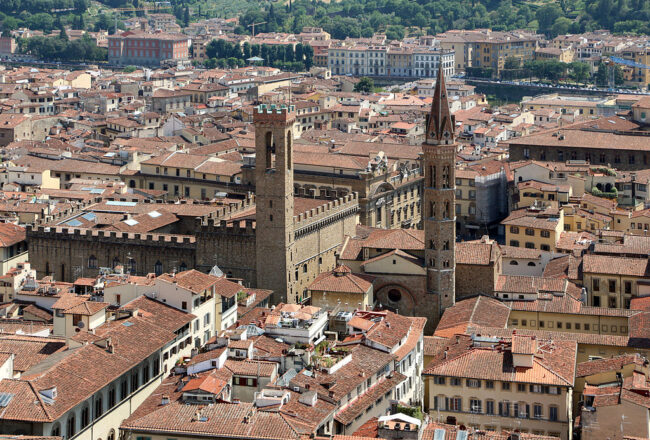
The Priors and magistrates of the Republic used to meet in the Badia Fiorentina before the construction of the Palazzo Vecchio. In 1285 Arnolfo di Cambio was commissioned to restructure the Badia, maintaining the axis of the pre-existing Romanesque church, which was enlarged. The external stone wall of the apse still flanks Via Proconsolo, and the upper portion of the gothic façade with its tympanum and rose window can be seen from the courtyard of the Pretura.
The slender belfry was chopped down by the Signoria in 1307, to punish the monks for refusing to pay a certain tax, but was built up again in 1330. In later times the Benedictine abbey saw periods of decadence alternate with periods of great splendor. In the 15th century, the Badia became a center of humanism sustained by the Portuguese abbot Ferreira de Silva.
Early in the 16th century, Giovani Battista Pandolfini commissioned Benedetto da Rovezzano to rebuild the part of the monastery on the corner between Via del Proconsolo and the present Via Dante Alighieri: thus the Pandolfini Chapel and the entrance portico were completed. The Sienese Serafino Casolani, who became abbot in 1624, took it into his head to transform Arnolfo’s church completely, and probably himself proposed the design to the architect Matteo Segaloni, who began work in 1627.
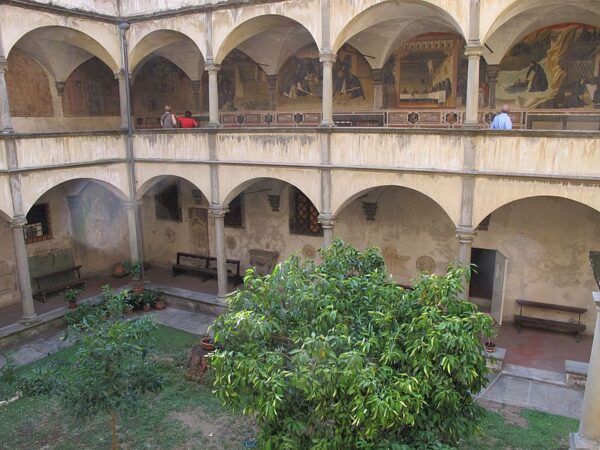
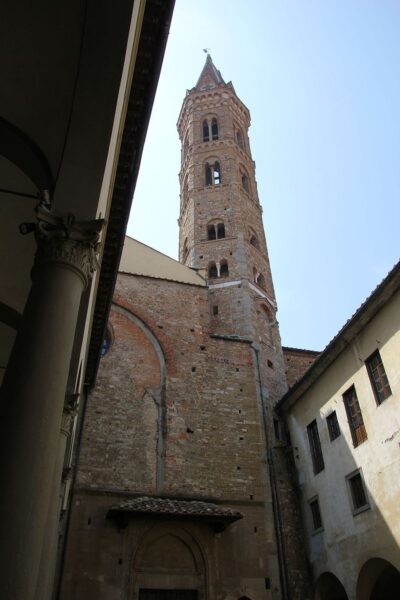
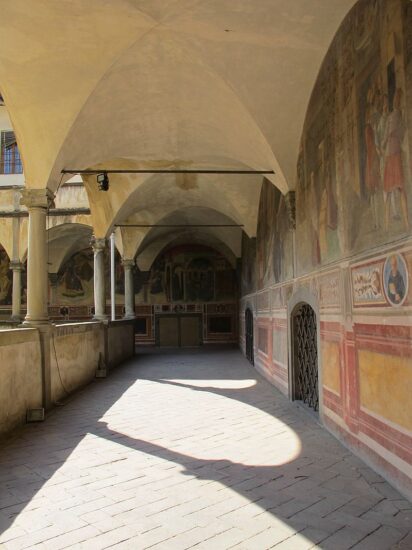
The church was given the plan of a Greek Cross. When the monastery was suppressed in 1810 the complex was broken up into houses, shops, offices, and store-rooms. The interior of the church, further altered in the 18th century, is in a mixture of styles. It is dominated by an elaborate carved wooden ceiling, made in 1631 by Felice Gamberai, which conceals the gothic open timber roof. The presbytery, with its 16th-century choir by Francesco and Marco Del Tasso, has some remarkable frescoes (1734) by Gian Domenico Ferretti and the quadraturista Pietro Anderlini.
To the left of the entrance is the church’s greatest masterpiece: the altarpiece showing the Virgin appearing to St. Bernard, painted by Filippino Lippi between 1482 and 1486 for Piero di Francesco del Pugliese. The painting was moved here from Marignolle in 1530 to save it from destruction during the siege.
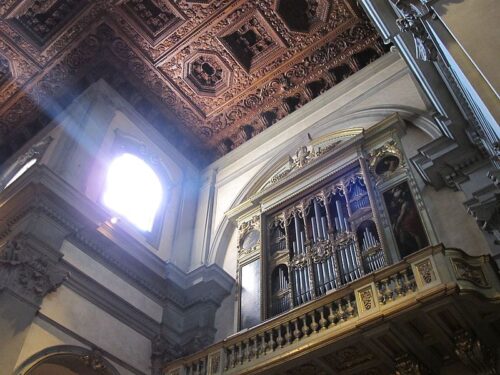
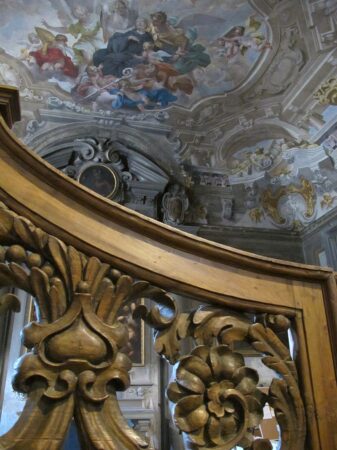
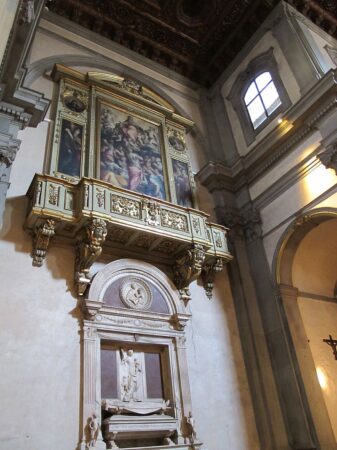
Among the funerary monuments the most important are the 15th-century ones: the tomb of Giannozzo Pandolfini (died 1456), from the workshop of Bernardo Rossellino; the tomb of Bernardo Giugni, by Mino da Fiesole; and above all, also by Mino, the tomb of the Margrave Ugo of Tuscany (1466-81), in marble and porphyry, surmounted by a personification of Charity. Mino da Fiesole also carved the Neroni Dossal showing the Madonna and Child between St. Leonard and St. Laurence.
Despite the alterations it has suffered in recent centuries, the Badia has managed to preserve the delightful Cloister of the Oranges, built between 1432 and 1438 with the assistance of Bernardo Rossellino. On the upper floor of the cloister, there is a fresco cycle of Scenes from the life of St. Benedict by the anonymous Maestro del Chiostro Degli Aranci (1436-39), who is perhaps to be identified with the Portuguese artist Giovanni di Consalvo.
Description by http://www.museumsinflorence.com/musei/Badia_Fiorentina.html
